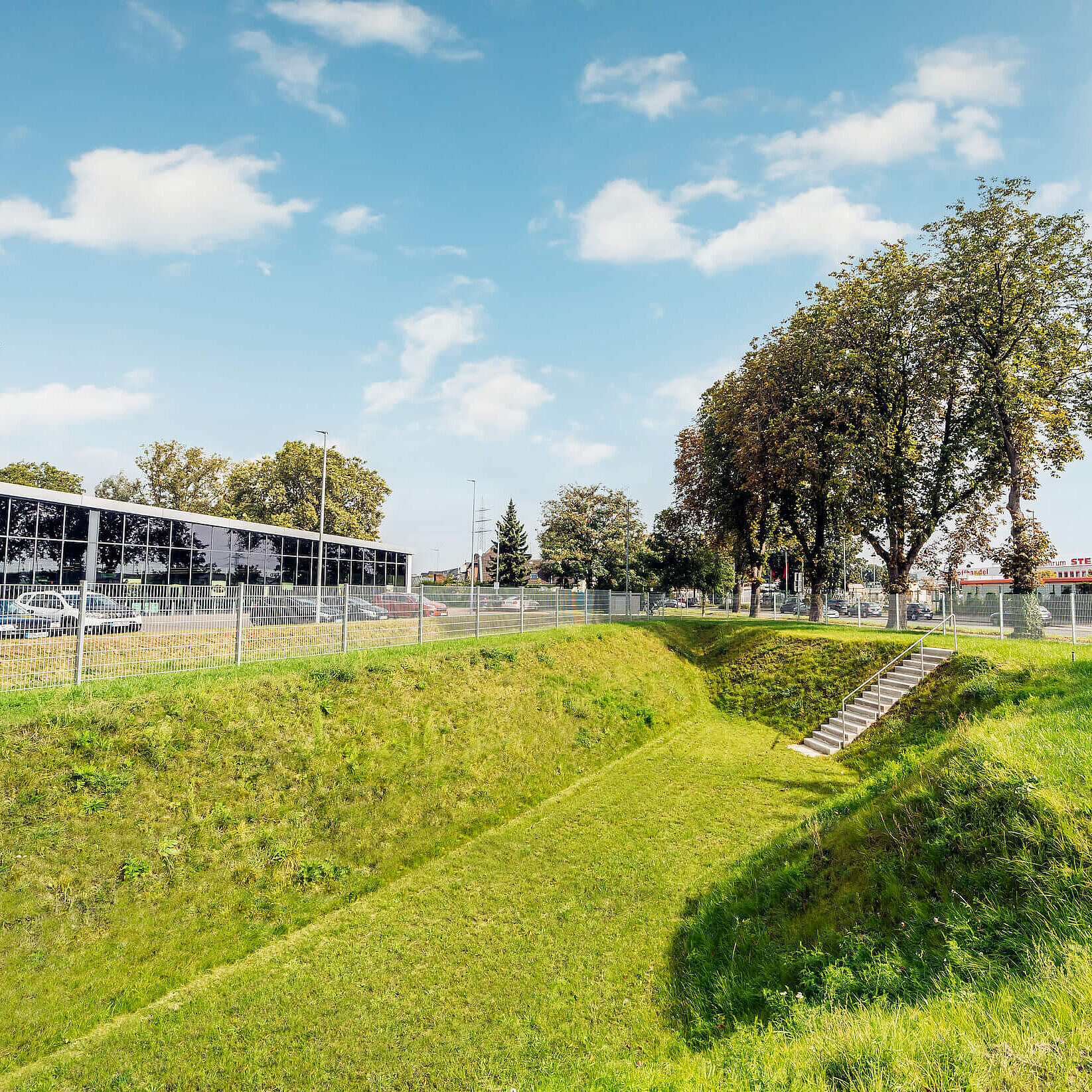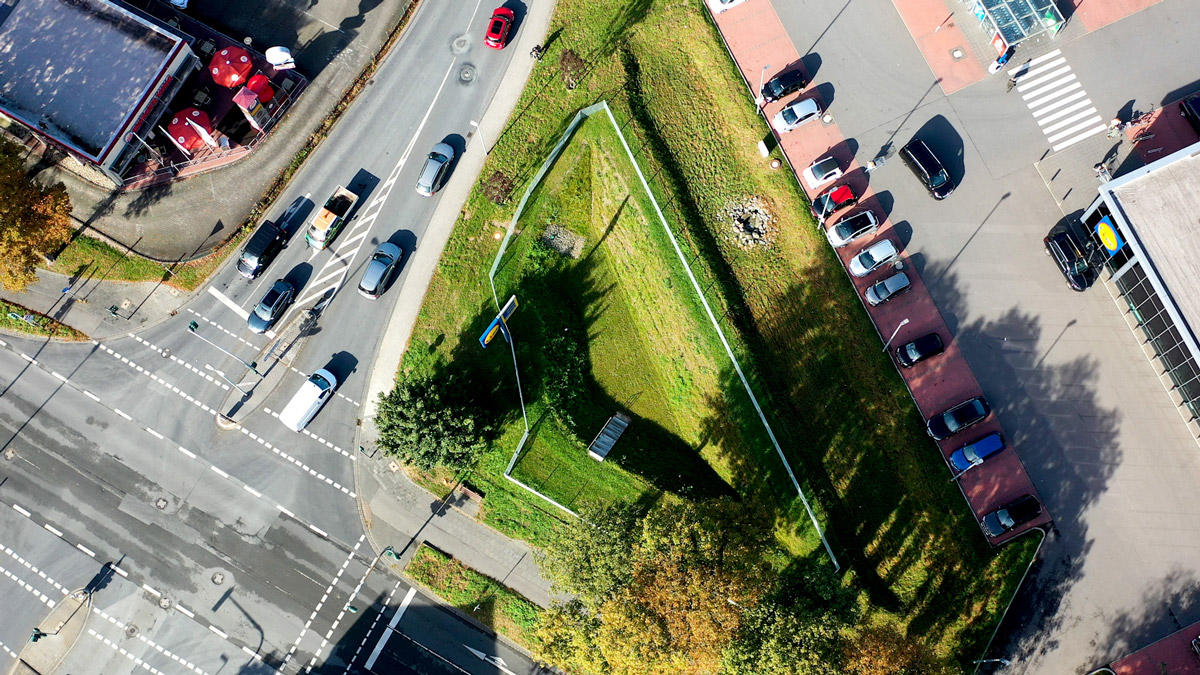Adress
Gerhard-Malina-Straße 2a
46537 Dinslaken

Together, the city of Dinslaken and the Klima.Werk have created a heavy rainfall retention area with a retention volume of around 265 cubic metres at the Hünxer Straße/Gerhard-Malina-Straße junction.
The flood protection basin in Dinslaken is designed to effectively mitigate the consequences of excess water due to future heavy rainfall. It is an example of how sustainable adaptation to climate change can be integrated into existing urban structures.
30 May 2016 was an extraordinary day for Dinslaken. On that Monday, the town was hit by extremely heavy rainfall. There was simply too much water on too many sealed surfaces - the result was that the underground pipes of the sewage system were completely overwhelmed and the streets flooded. The lack of surface runoff and drainage was particularly noticeable in the north-east of the city centre. The junction of Hünxer Straße and Gerhard-Malina-Straße was completely under water.
Today, there is nothing to remind us of that day in May 2016. Well, almost nothing: in the northern intersection area, between a supermarket and the converging streets, a grass-covered ditch - or more precisely, a retention basin - is nestled into the urban landscape over an area of around 350 square metres. This is the response to this weather event and is intended to protect the traffic junction, which is so important for the city, from such extremes in the future.
“After these events, solutions were needed to protect our city from such situations,” says Marcus Beck, urban planner for the city of Dinslaken and city coordinator of the Klima.Werk. “And this solution is a low-lying retention area directly at the intersection, where the water can also seep away at a controlled rate”. 15 steps lead down to the 2.45 metre deep retention basin. This can absorb up to 265 cubic metres of water - as quickly as possible, when needed. This keeps the entire crossing free from flooding due to excess stormwater. Before construction, the soil was tested for its infiltration capacity, then the stormwater pond was excavated and landscaped.
Our animation illustrates the capacity:
“Even in the event of extremely heavy rainfall, which statistically occurs once every 20 years, excess rainfall will still accumulate there,” continues Beck. However, the stormwater basin has another positive effect, as it not only serves as a retention surface and temporary storage area: The design not only diverts stormwater into the underground sewer system, but also allows the collected water to infiltrate into the ground. Beck: “The proactive management of rainwater is also an important step towards mitigating the effects of climate change.” Such retention areas, together with evaporation and infiltration areas, have a positive effect on the urban climate. Evaporation, for example, cools the surrounding area. “Structures such as the rainwater retention basin in Dinslaken therefore represent an elementary building block in the implementation of the sponge city concept and an important contribution to greater climate resilience in urban areas”.

The proactive use of stormwater is an important step for us to mitigate the consequences of climate change.

Marcus BeckUrban planner for the city of Dinslaken and City Coordinator of the Klima.Werk

Construction began at the end of January 2021. The funding of €55,000 was provided by the State of North Rhine-Westphalia as part of the Ruhr Conference project “Climate-Resilient Region with International Appeal”. Marcus Beck is confident that the Kreuzung-Hünxer-Straße/Gerhard-Malina-Straße junction in Dinslaken will be able to cope with extreme weather events such as the one in May 2016.

Gerhard-Malina-Straße 2a
46537 Dinslaken
© Copyright
Images: Klima.Werk/EGLV